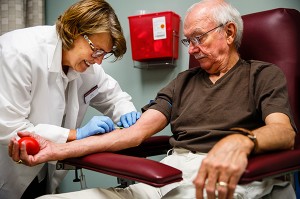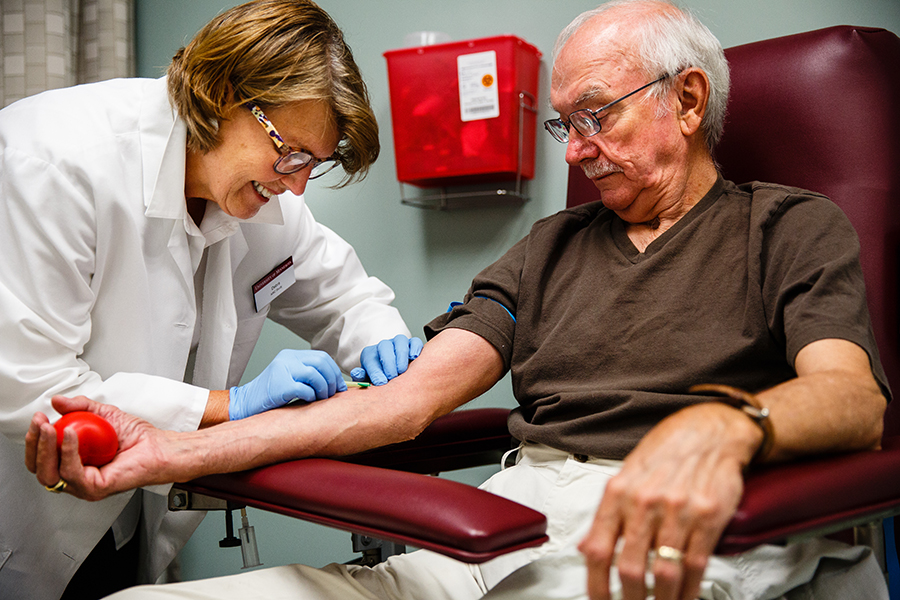Three decades ago, the University of Minnesota School of Public Health (SPH) helped initiate one of the world’s largest and longest running studies about heart health — the Atherosclerosis Risk in Communities (ARIC) Study.

With funding from the National Institutes of Health’s National Heart, Lung, and Blood Institute in 1987, SPH recruited a cohort of 4,000 participants aged 45-64 in the northwestern suburbs of Minneapolis. Three other universities across country recruited similar participants and together about 15,800 people became part of the cohort study. The same people recruited in the 1980s are the same ones still participating today.
Atherosclerosis is the buildup of plaque in the arteries, which narrows the artery and can lead to heart attack or stroke. “With ARIC, we set out to understand the complicated risk factors for heart disease, whether they be genetic or environmental,” says Aaron Folsom, SPH professor and principal investigator of the study since its inception.
Heart disease is the number one cause of death for both men and women across the country and, in 2013, heart disease and stroke accounted for more than 61,000 hospitalizations in Minnesota, resulting in almost $2.7 billion in inpatient charges.
Impact of ARIC

When it began, ARIC was unique in that it included a racially diverse set of participants. “At the time, most studies only involved white people, so ARIC data allows us to have a greater understanding of heart health within other communities,” says Folsom.
As of 2016, ARIC data has resulted in more than 1,800 scientific publications and added much to what the world knows about heart health. It is a key contributor to the American Heart Association’s recommendations on how people can avoid heart diseases and stroke.
ARIC has driven significant new heart disease discoveries. For example, 10 years ago, study researchers discovered that ARIC participants with certain mutations in a gene called PCSK9 had a 50 percent lower heart disease risk. This finding motivated researchers to further explore the PCSK9 gene and found it encodes an enzyme that can keep LDL cholesterol high. In 2015, the FDA approved a new class of drugs called PCSK9 inhibitors for clinical use in patients with high cholesterol who are at an increased risk of heart disease.
The People Behind the Research

There has been an uninterrupted stream of data from the study for 30 years. Participant data are collected two ways: through check-in phone calls twice a year where participants are asked about their health and any recent hospitalizations, for which medical records are obtained; and through periodic clinic visits where they run through a battery of tests. These clinic visits currently happen about every other year, depending on funding, with the most recent in 2016-17 and upcoming clinic visits in 2018-19.
Every effort is made to encourage people to remain in the study as they age. Members of the cohort now range from 75-94 years old, prompting the ARIC team to make every effort to keep participants enrolled. For clinic visits, cabs are sometimes sent to pick up participants who no longer drive and for follow-up phone calls, the study tracks changes in phone numbers and addresses as people move to warmer climates or retirement homes.
“The people who are part of this study are so loyal to us,” says Aine McCormack, who has been calling participants on the phone as part of the SPH ARIC team for 15 years. “And, in seeing how they age, I’ve learned a lot about steps I can take to live a healthier, longer life.”

Doris Whiteis is now 77 and was recruited for the study at the age of 47, along with her husband Lowell. As study participants, the couple receives information from the ARIC team about how their data contributes to heart health knowledge. “We tell our friends about the study and share what we have learned as participants,” she says. “It’s been a privilege to take part.”
“We wanted to participate because we knew we would get a more thorough physical beyond what we get from our regular doctor,” says Lowell, now 78. “Our children like that part,” says Doris.
As part of the 2016-17 clinic visits, participants are given multiple physical assessments relevant to aging, from basic measures like blood pressure and cholesterol to hearing tests and measurements of cognitive performance. These data are shared with both participants and their primary doctor, and often potential risk factors are identified.
Data from thousands of people like Doris and Lowell Whiteis help paint the picture of heart health, as well as advancing our knowledge in other areas. SPH faculty have used ARIC data, for example, to publish findings about whether sleep apnea, dietary patterns, vitamin D, or certain genetic variants contribute to heart disease risk.
The data are regularly used to explore emerging research areas, such as novel risk factors for diabetes, cancer, venous thrombosis, and dementia. “The original intention of the study was looking at heart attacks and stroke, but it’s grown and morphed throughout the years to include more than a dozen other diseases,” says Folsom.
“The quantity of information present in ARIC is unparalleled,” says Pamela Lutsey, SPH associate professor who regularly analyzes and publishes research from ARIC data. “The ARIC study has provided a wealth of information about cardiovascular disease risk factors and will continue to advance what we know about heart health for years to come.”

